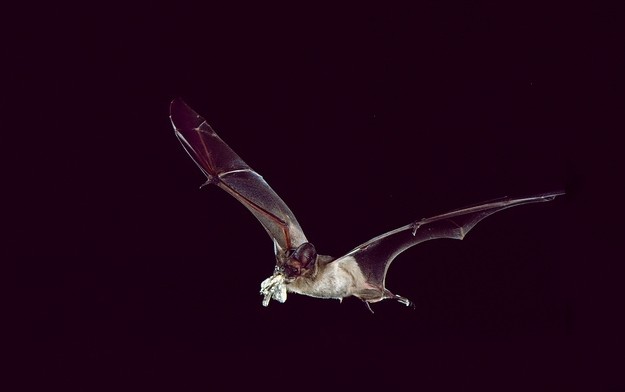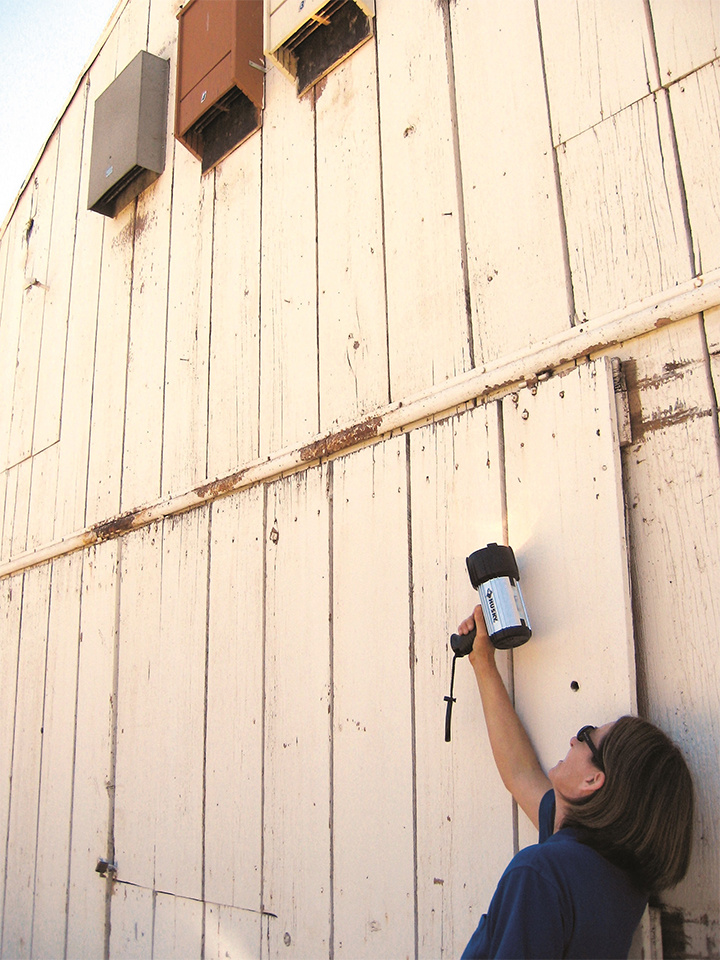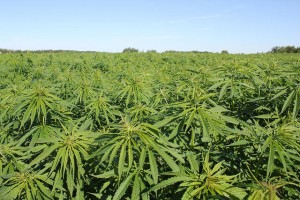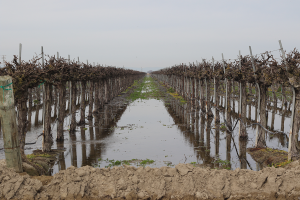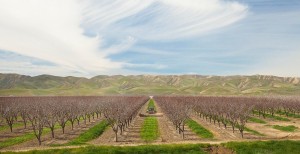Like all California farmers, Don Cameron is used to long dry spells interrupted by wet years. Drought and flood, he says, have always been a way of life in the Golden State.
But in 36 years of farming, Mr. Cameron says he’s never experienced anything like the swings of the past six years.
“We’ve never seen a drought that long or that intense,” says Cameron, general manager of Terranova Ranch, a 7,000-acre farm in Helm, Calif. “And we’ve never seen a change overnight from absolutely nothing in the reservoirs to now, they’re spilling water.”
In response, Cameron and his crew have been partially submerging their fields in rainwater. It’s a relatively new tactic to capture excess flow during wet years to recharge the diminishing underground aquifer that farmers in the region rely on to irrigate their crop. It’s also used to reduce the risk of flooding downstream.
“We want to take as much floodwater [as possible] to take pressure off the system,” Cameron says.
The very welcome news is that severe drought conditions in California are easing or ending. But a sequence of extremes – a record-setting five-year drought, followed by what’s shaping up to be the wettest year in decades – is serving as an alert for officials and residents alike. And it’s pushing change among some of the state’s most politically conservative citizens: farmers. Call it taking care of the land. Call it good business sense. Just don’t call it climate change.
Some, like Cameron, are looking to new approaches to recharge groundwater. Others are calling for more storage to capture rainwater during wet periods, or applying technology to farm effectively with less water. As part of broader efforts to manage and improve the state’s water infrastructure, such efforts could be crucial to California’s ability to serve a growing population while producing food at current levels.
“When you talk about addressing the problem of extremes, you’re talking about having more eggs in the management basket,” says Lorraine Flint, a research hydrologist at the California Water Science Center, which collects and analyzes data for the US Geological Survey (USGS). “We have to look at the big picture and manage all aspects of the hydrologic system. That includes the vegetation and the soil and the infrastructure.”
“This is where the paradigm shift needs to happen,” she adds. “You have to have a healthy watershed.”
For five years, California’s debilitating drought decimated forests, tormented farmers, and forced legislators to enact statewide emergency conservation measures. Then early this year, a series of atmospheric rivers – long columns carrying enough water vapor to match “average flow of water at the mouth of the Mississippi River” – made landfall in Northern California. The rain and snow that followed filled parched reservoirs and accumulated in snowpacks in the Sierra Nevada Mountains. Now, with rain still falling in parts of the state, the National Drought Mitigation Center has declared about 75 percent of California out of the drought.
The precipitation drew attention to the state’s infrastructure – aging and poorly-maintained roads, bridges, levees, and dams that couldn’t withstand the sudden surge in storms.
In February, damage to the concrete spillways at Oroville Dam forced the evacuation of nearly 200,000 people in surrounding towns. The same month, San Jose became the site of massive flooding after officials were forced to release water from Santa Clara County’s Anderson Dam. Levee breaches in San Joaquin and Sacramento counties also led to flooding. And residents near Big Sur in the state’s Central Coast are still struggling with their daily commute more than a month after mud- and rockslides led to the closure of a 48-mile stretch of Highway 1.
“We’ve got a water infrastructure [system] that doesn’t have any forgiveness in it,” says David Zoldoske, director of the Center for Irrigation Technology at California State University, Fresno. “Recent weather conditions have pushed it to the brink.”
But aging infrastructure is just one part of a broader conversation, scientists say. Climate models suggest that swings from dry to wet and back are likely to become more extreme as the earth gets warmer.
“The trend is toward periods that look like where we were just in, where you have wetter wet seasons, drier dries, and all of it warmer,” says Jeffrey Mount, a senior fellow in water policy at the Public Policy Institute of California (PPIC).
The question is one of overall sustainability for the state. To respond to an increasingly variable climate, scientists say, California will need to apply a range of water management methods that would account for the effects of such extremes. That would include greater water storage capacity to capture rainfall during the wet season and make up for decreasing snowpacks, which serve as an important repository for water in the wintertime. Initiatives to ensure that soil traps moisture more efficiently, and programs and legislation to manage and recharge groundwater would also be crucial, they say.
“Our society needs to be concerned with the prospects of there being less and less water available,” says Lowell Stott, professor of earth sciences at the University of Southern California. “We have to be prepared for the kind of variability that punctuated the past five or six years. We can’t simply depend on government agencies to solve our water problems without participating.”
One indirect outcome of the extreme stress produced by the recent drought has been an increased willingness to bring together traditionally conflicting sectors. The landmark 2014 Sustainable Groundwater Management Act, for instance, has county farm bureaus working with local government agencies. While the law has drawn concerns from both environmentalists and farmers, it has brought the two groups to the table in ways that had previously seemed impossible.
Overcoming ‘fault lines’
Such a comprehensive approach would need buy-in from the state’s agricultural industry. In an average year, California agriculture irrigates more than 9 million acres of farmland, using about 80 percent of all water expended on businesses and homes in the state, the PPIC reports.
But the climate change argument has never been an easy sell in conservative communities. And though 62 percent of Californians voted for Hillary Clinton in the last election, the 33 percent who supported President Trump came largely from the state’s rural regions. The political and geographical lines run alongside decades-old urban-rural conflicts around water rights in the state, adding to a tangled history of resentment and mistrust.
Farmers often say they feel attacked for their livelihood by city dwellers, scientists, and environmentalists who fail to recognize their relationship with the land.
“People don’t understand what it takes to grow a crop, what hours we put into it, to take something from field to the market,” says Jason Giannelli, a farm manager in Bakersfield, a conservative bastion in the agriculture-reliant San Joaquin Valley.
“Is it warming up? Yeah, maybe. This [drought] was by far the worst one we’ve been through,” adds Dax Kimmelshue, a walnut and almond grower in Butte County, which voted for Mr. Trump. “But everybody tries to predict these things and weather changes yearly. And so what next year brings, we don’t know.”
Such sentiments run up against concerns that growers depend too much on past experience to determine their present and future actions. The result, some say, is too short a perspective on climate and water – resistance that could be devastating for the state’s environment and economy.
“Farmers know what’s worked for them and they want to continue [to do] that,” notes Robert Willmott, who manages technology for the 200-acre orchard at Fresno State. “They are probably the hardest people to change.”
“The lesson that needs to be learned by government and agencies and farmers – everybody – is that we need to be prepared for variability and uncertainty,” says USC’s Professor Stott. “We can’t bank on the past to give us an adequate estimate of what’s going to be.”
Skepticism of climate change or its causes, however, doesn’t mean farming communities have done nothing to respond to changes they have seen and felt. Farm water use in 2014 dropped about 15 percent, compared with 1980, according to the PPIC, and more farmers today are embracing technologies that give them “more crop per drop.” Among some, the extreme swings between wet and dry have also brought home the urgency of a diminishing water supply, and how that affects agriculture’s bottom line and its future.
“There are still fault lines in water that we have to overcome,” says Sarge Green, a water management specialist with the California Water Institute at Fresno State. “But everybody seems to support the notion that we need to use water most efficiently. There’s been tremendous investment in agricultural, municipal, and industrial use,” from government, investors, and farmers themselves.
Embracing change
At Terranova Ranch in Helm, about 30 miles southwest of Fresno, workers began a Friday morning in March by checking irrigation pipes and tilling the earth to prepare for the spring planting. A massive truck lumbered over the fields, pulling clusters of carrots out of the ground.
Cameron, the general manager, stood at the edge of several acres of grapevines. Patches of soil peeked from water flooding the ground. “We take the floodwater and we use our old flood irrigation systems that we left in place to deliver the water to the fields,” he says. Some of the water feeds the soil and the plants. Some evaporates. But the rest, he says, goes into recharging the aquifer.
It was a practice the ranch first tested in 2011 – the last time the region saw significant rainfall. Cameron estimates that about 70 percent of the water they applied returned to the underground water table.
“We have been monitoring groundwater levels for 35 years. We had noticed a continual decline in the groundwater table,” he says. “We felt it was responsible on our part to do something about that.”
Today some trade groups, like the Almond Board of California, are embracing the practice. The board in 2016 partnered with the Lawrence Berkeley National Laboratory – a Department of Energy science lab run by the University of California – to study how to best utilize almond orchards for recharging groundwater and managing excess flood flows. (Almonds have received a lot of heat throughout the drought for being a water-intensive crop.)
In Butte County, Mr. Kimmelshue has adjusted his approach to farming since taking over his family’s 225 acres in the early 1980s. Despite his reluctance to discuss global warming, Kimmelshue has shifted from surface irrigation to a pressurized sprinkler system that distributes water more evenly and efficiently. He’s two years into installing solar panels across the farm, which he says cuts down his energy use and cost. He’s even let his daughter talk him into installing soil moisture sensors that inform him, via a mobile app, when and how much to irrigate certain areas of the farm.
Part of that has to do with the bottom line, Kimmelshue says. Most farmers know what consumers want and are willing to grow those crops in ways that satisfy customer demand. But he adds that farmers also know how important the environment is to their livelihood.
“We’re not evil,” he says. “We know you gotta take care of the land for the next generation. There are new things like this that [farmers] are trying, to create a more sustainable environment.”
That said, Kimmelshue and other farmers say they would like to see more efforts to develop aboveground storage to capture excess rainwater ahead of the extended dry season.
“If we possibly had increased storage capacities when we had extremely wet years like this, we could capture enough water to get us out of a five-year drought,” says Mr. Willmott, the orchard technician. “If we invest in the infrastructure for the state’s water system, we will make not only the farmer’s life better, but all other people’s lives better.”
Link to article




